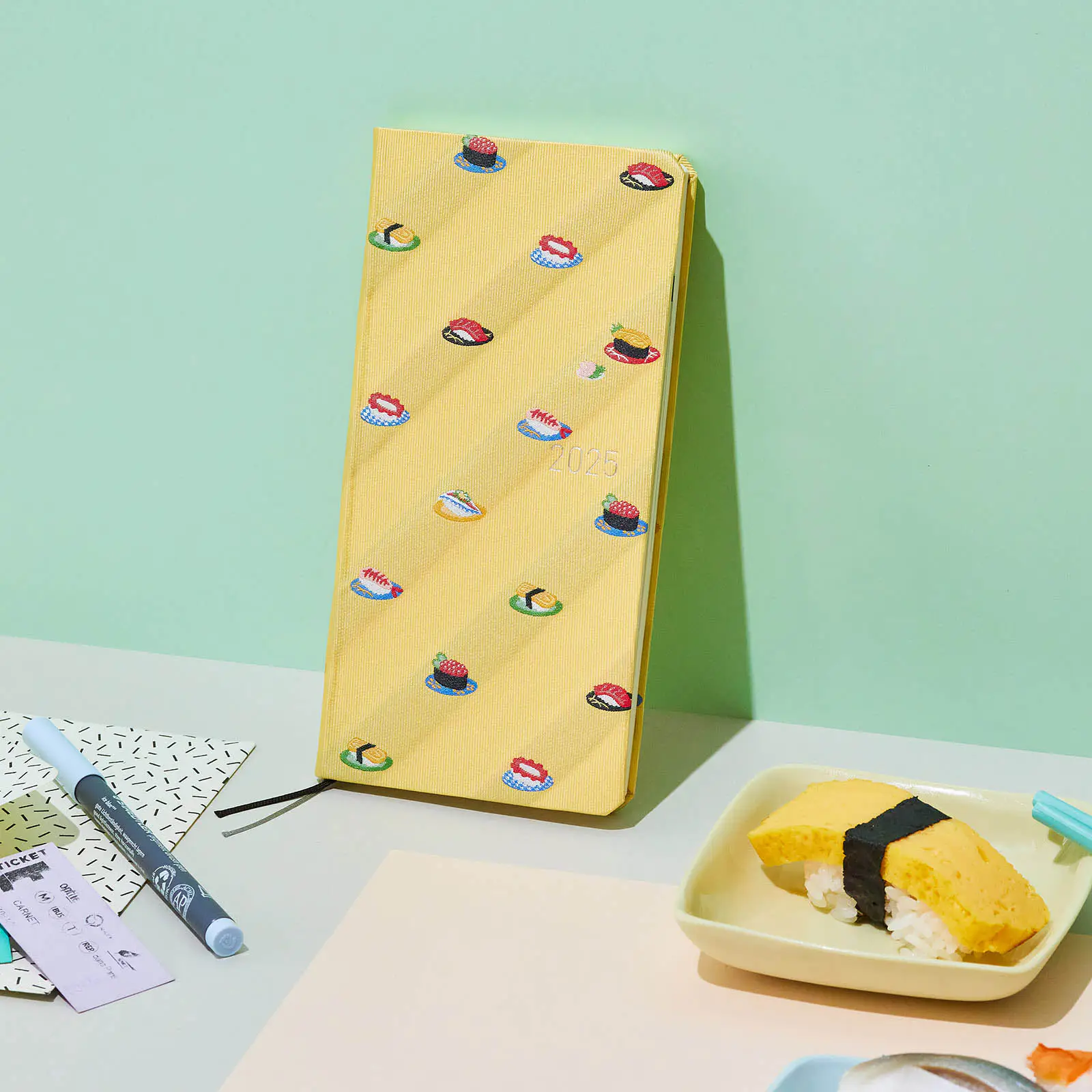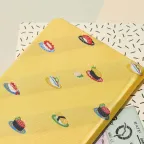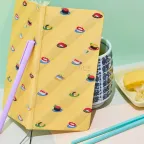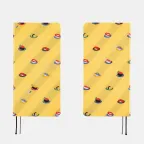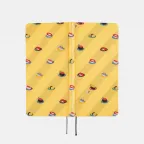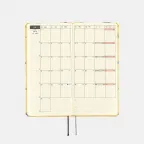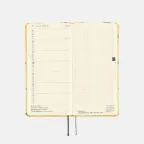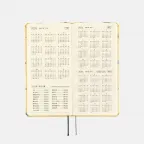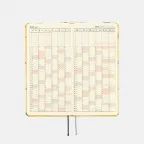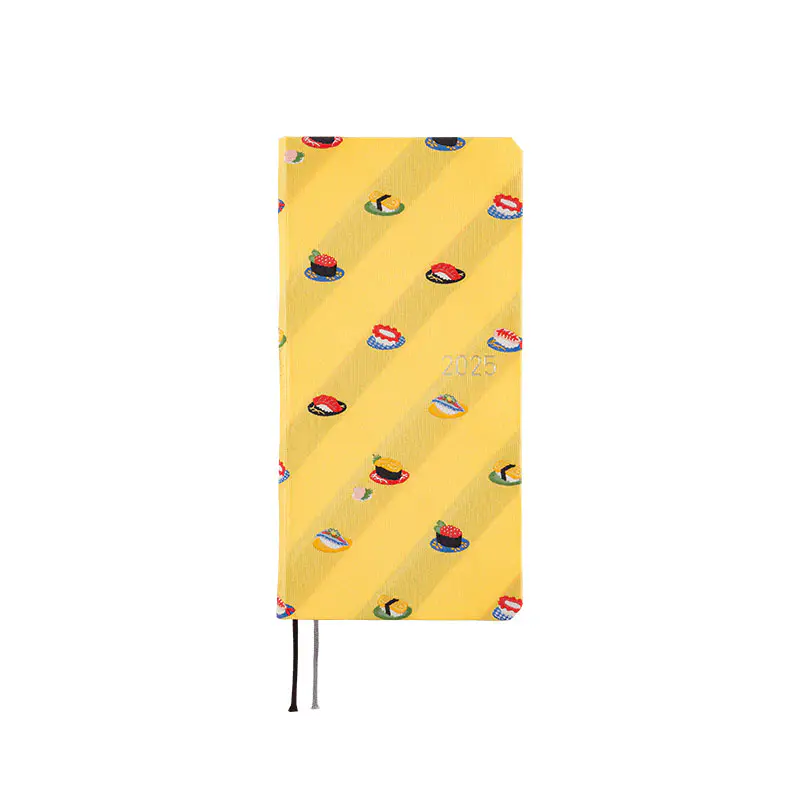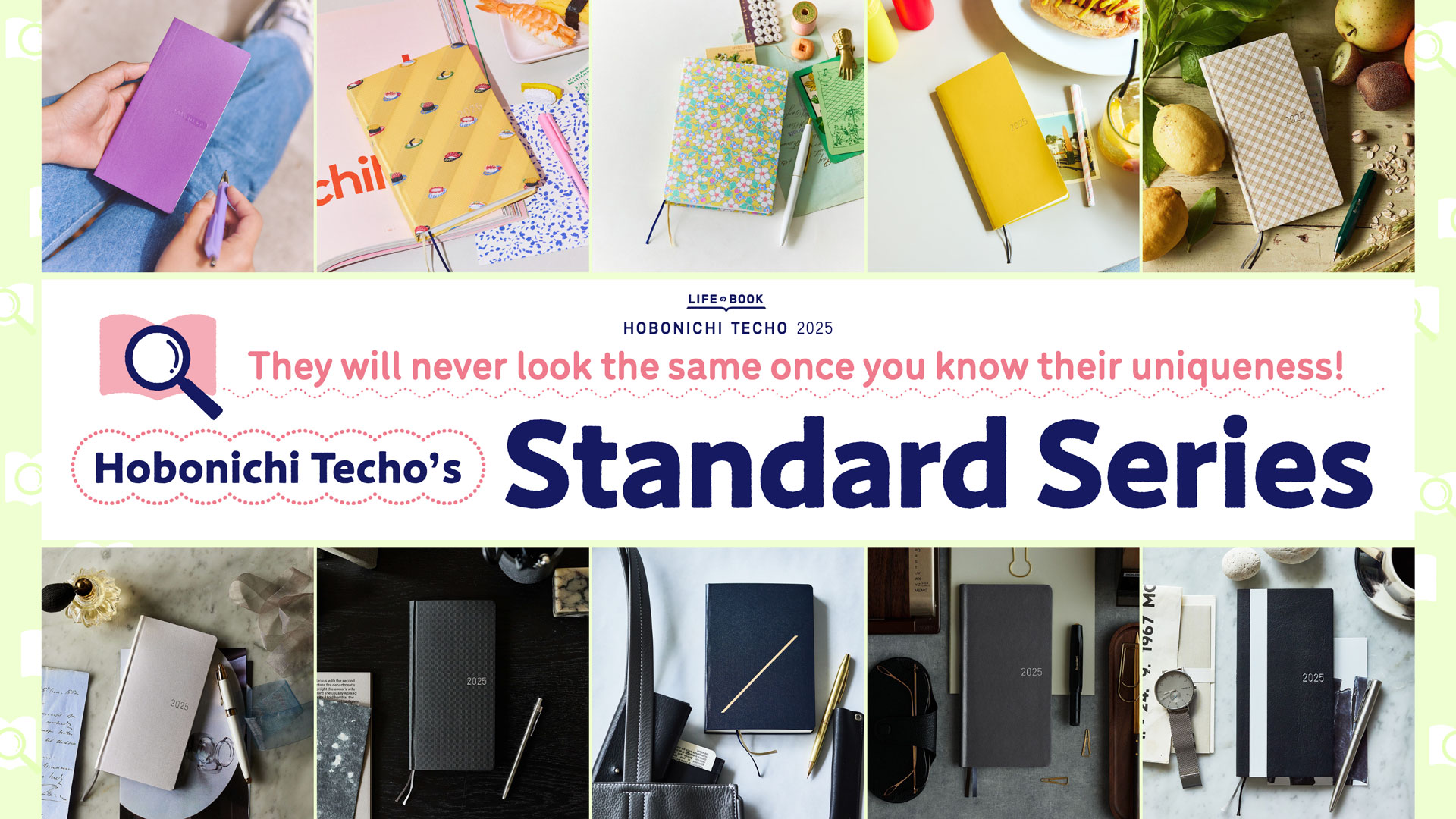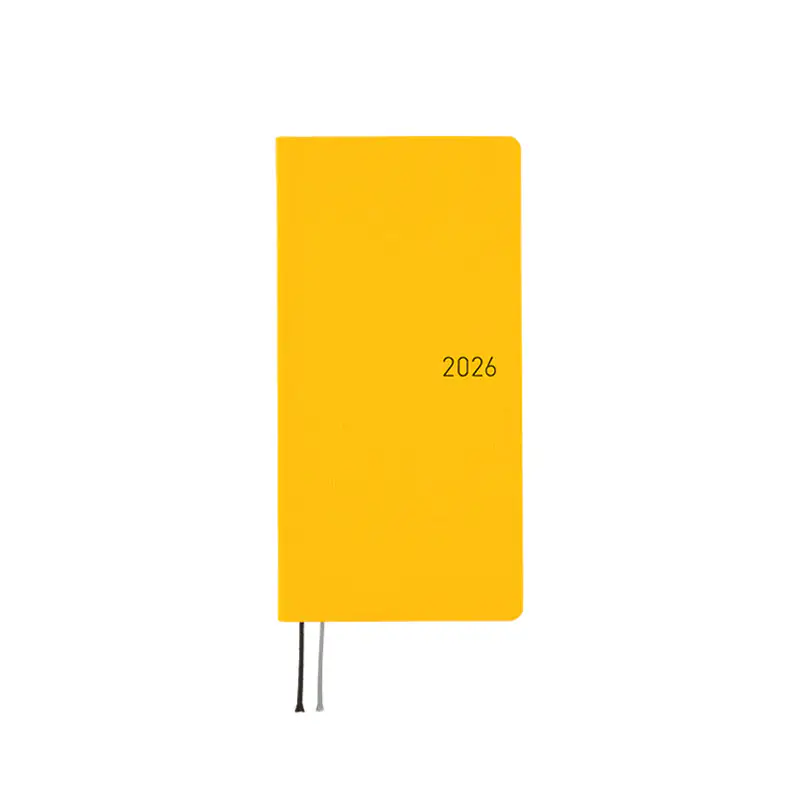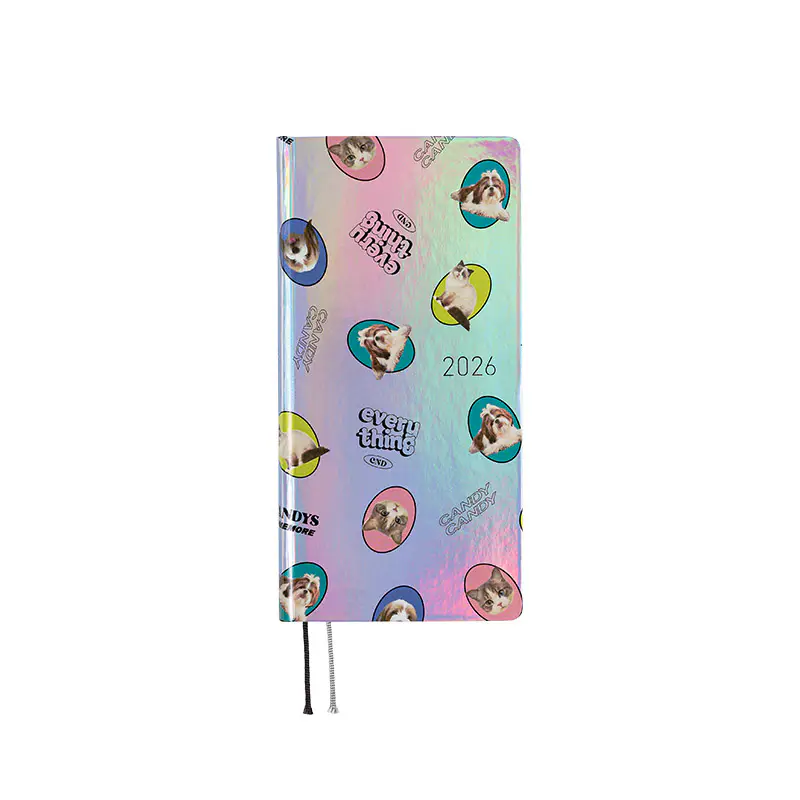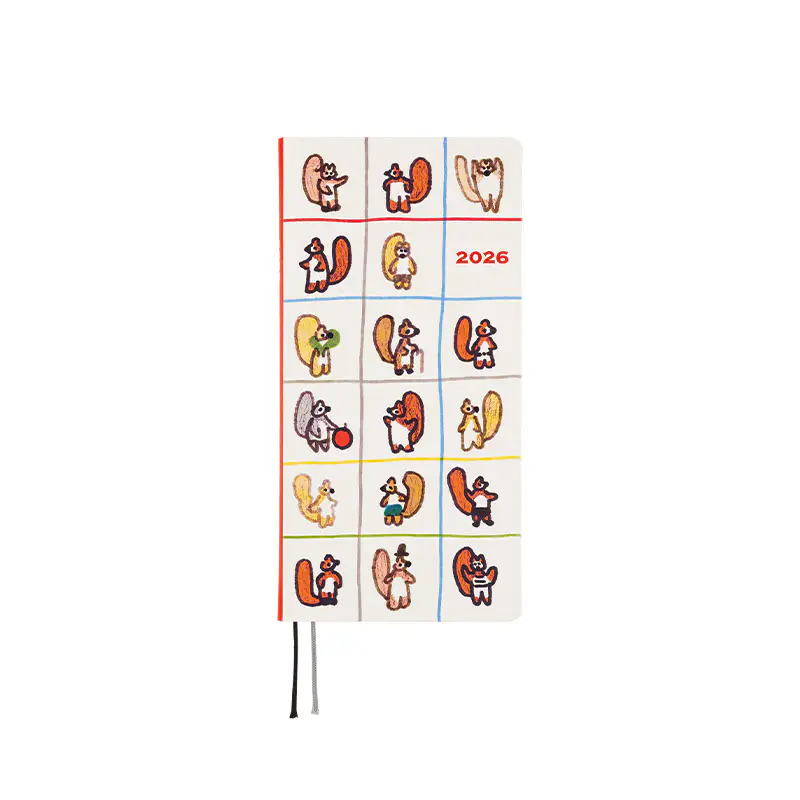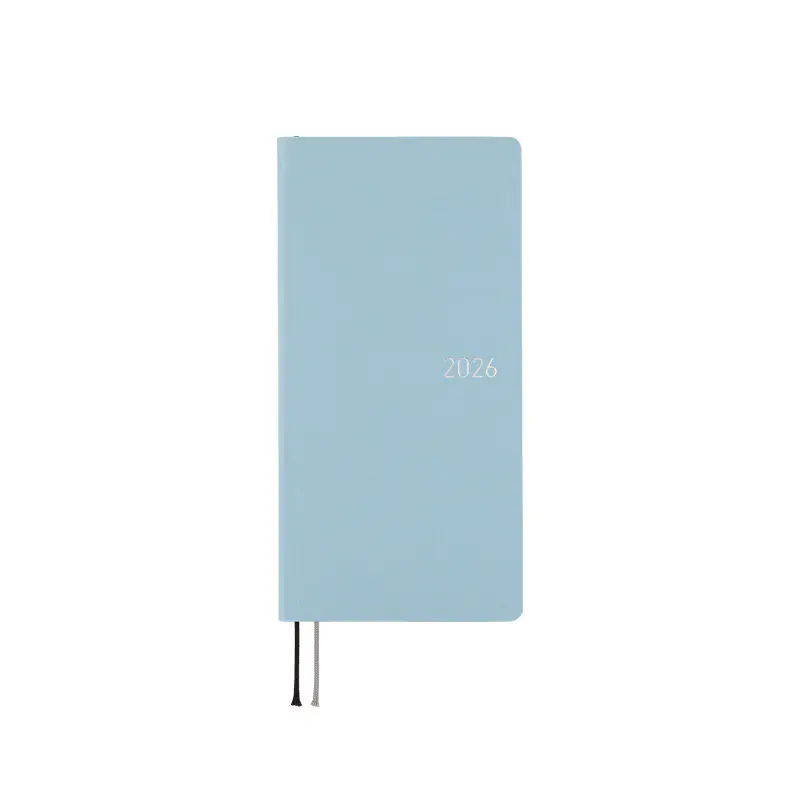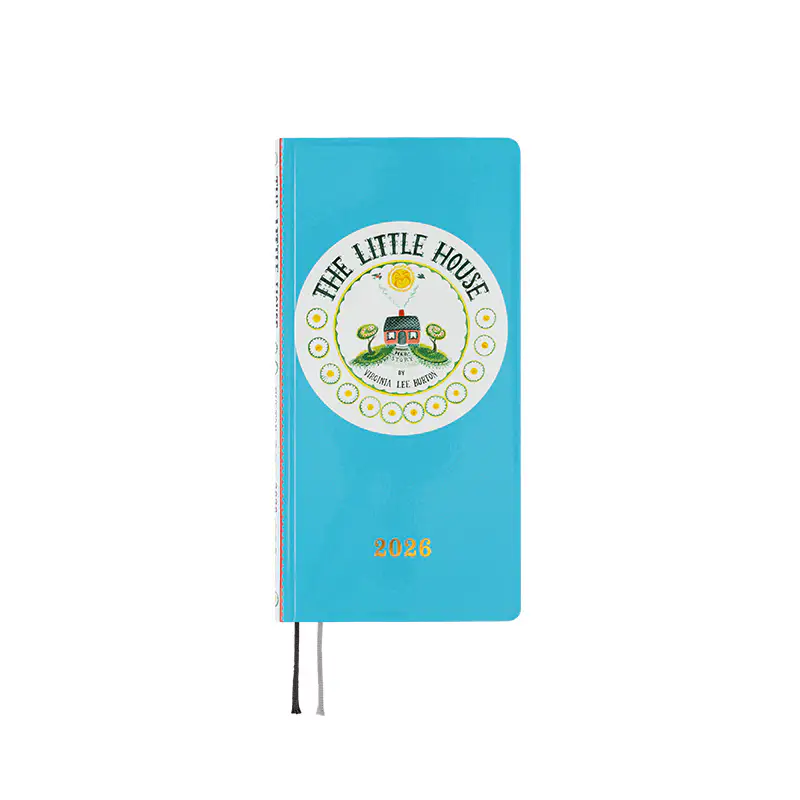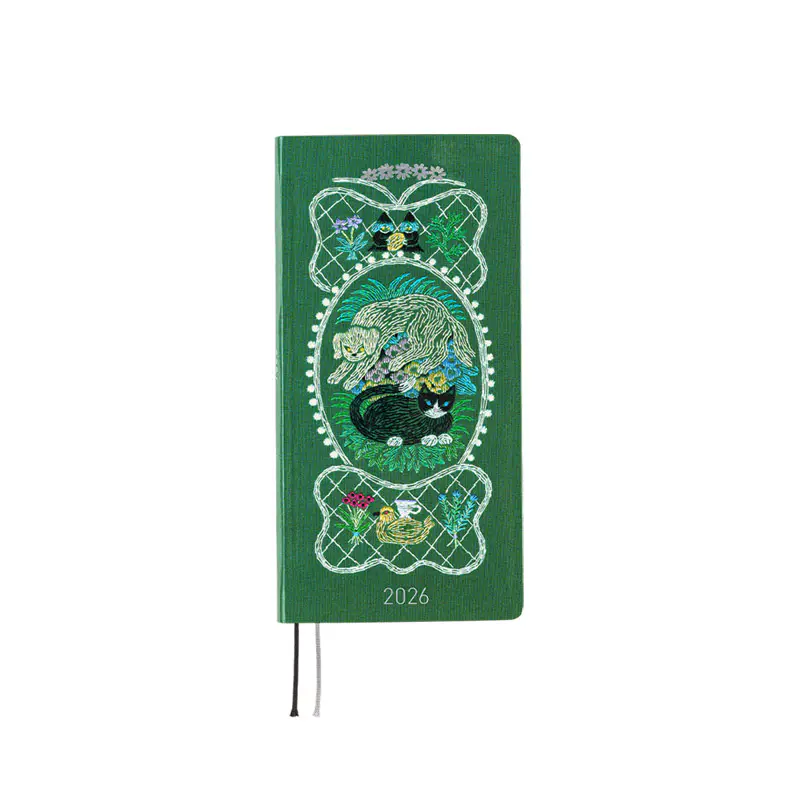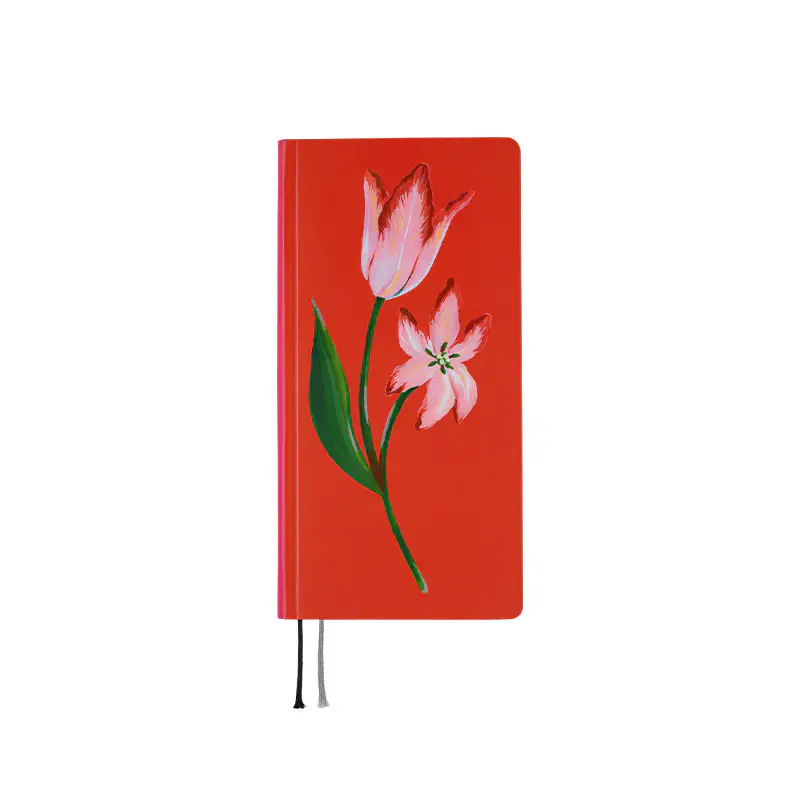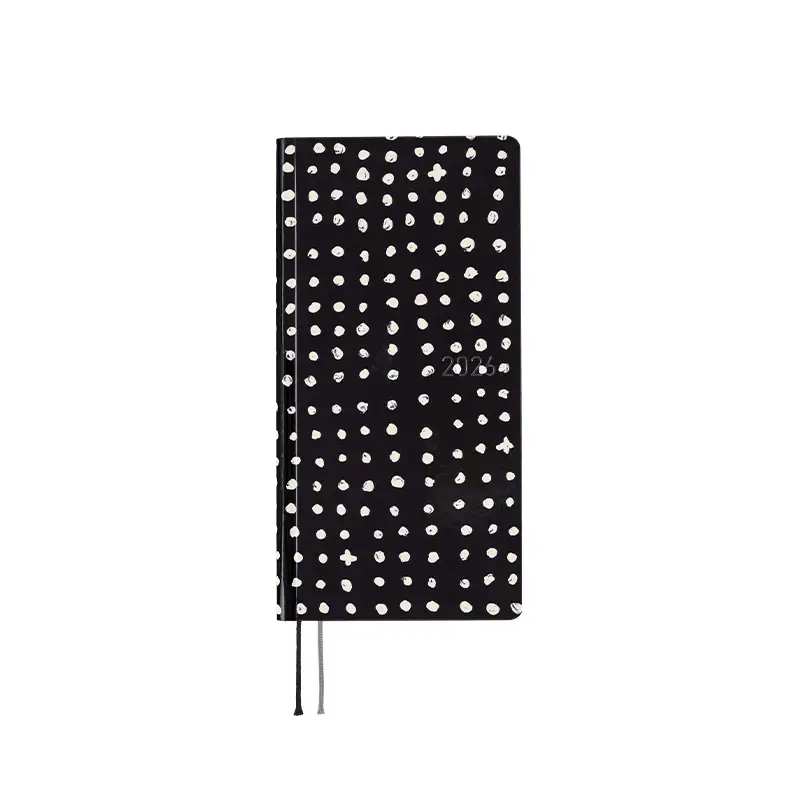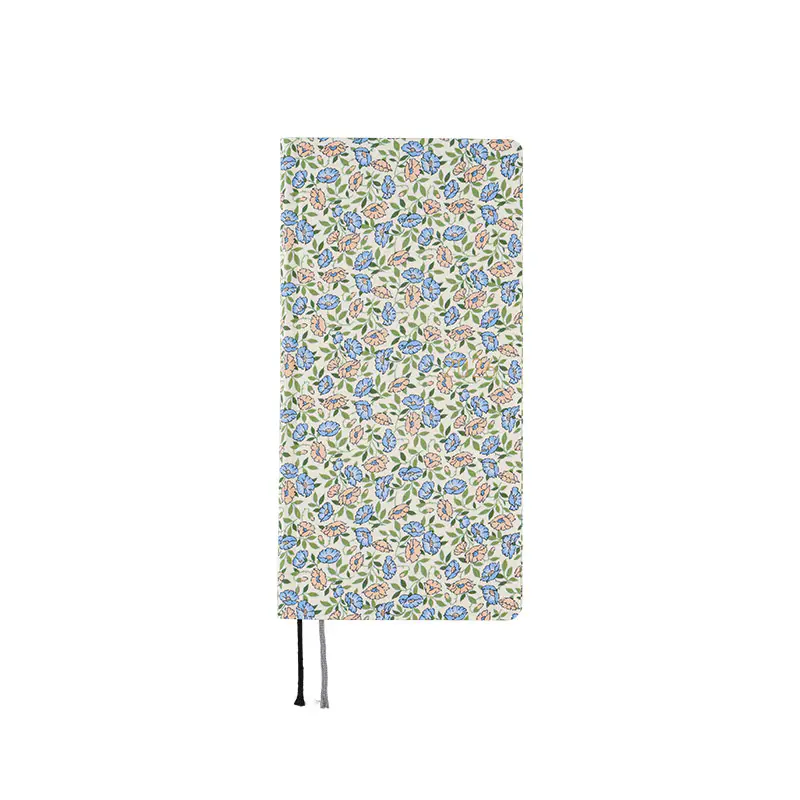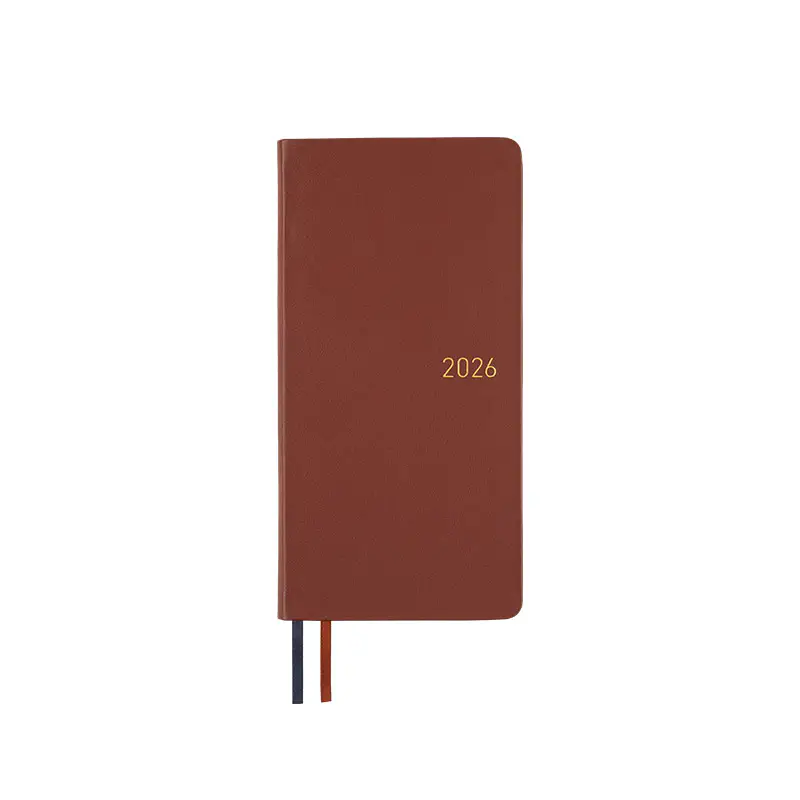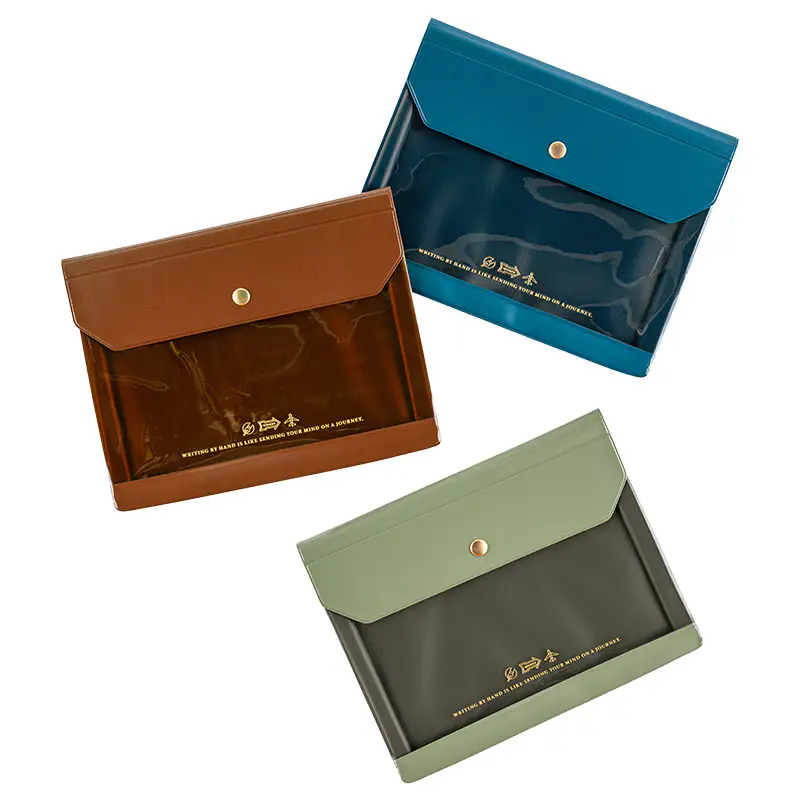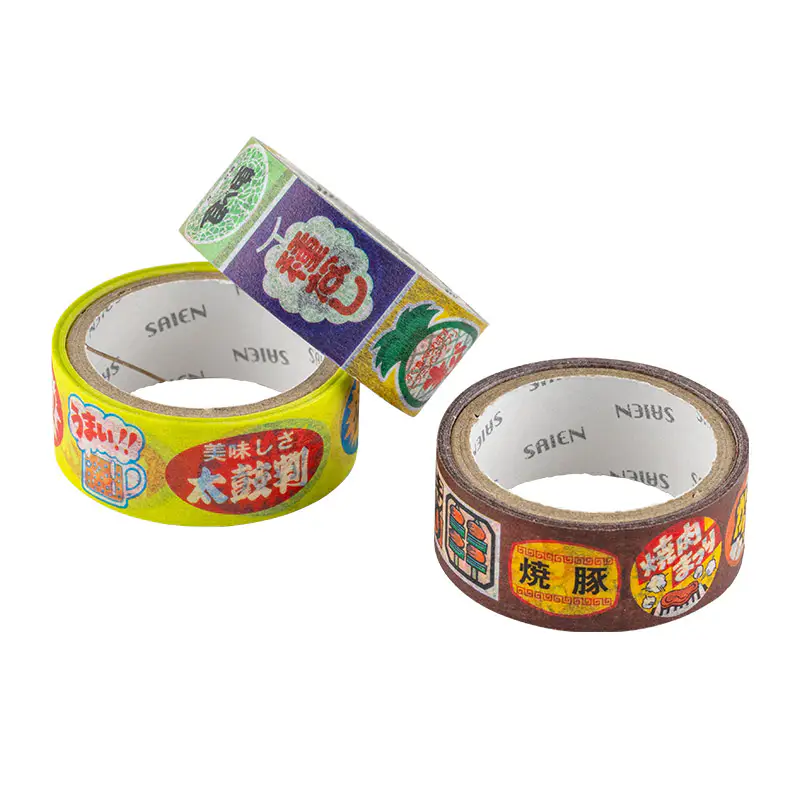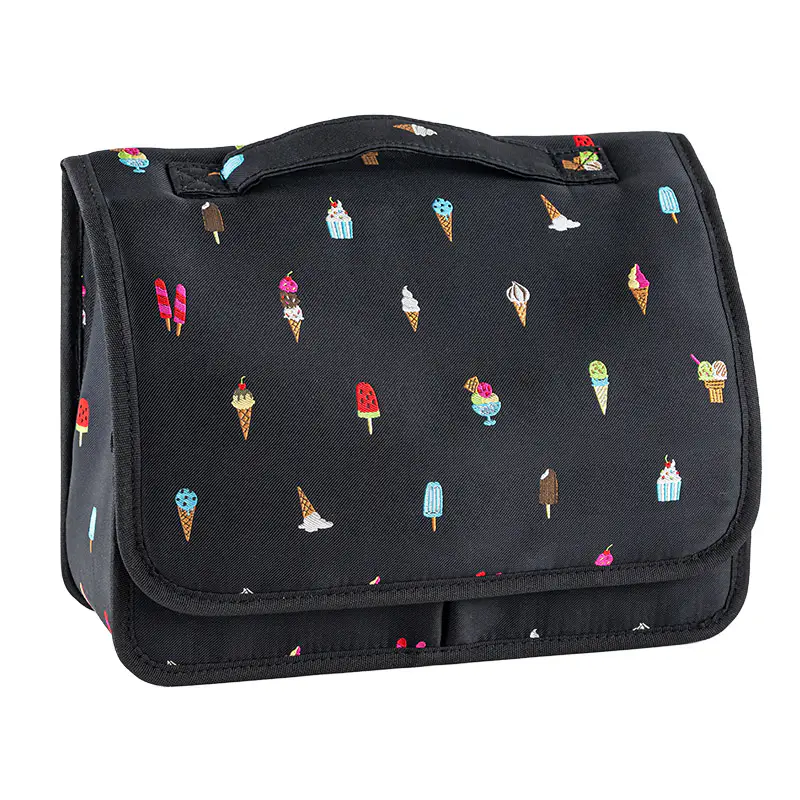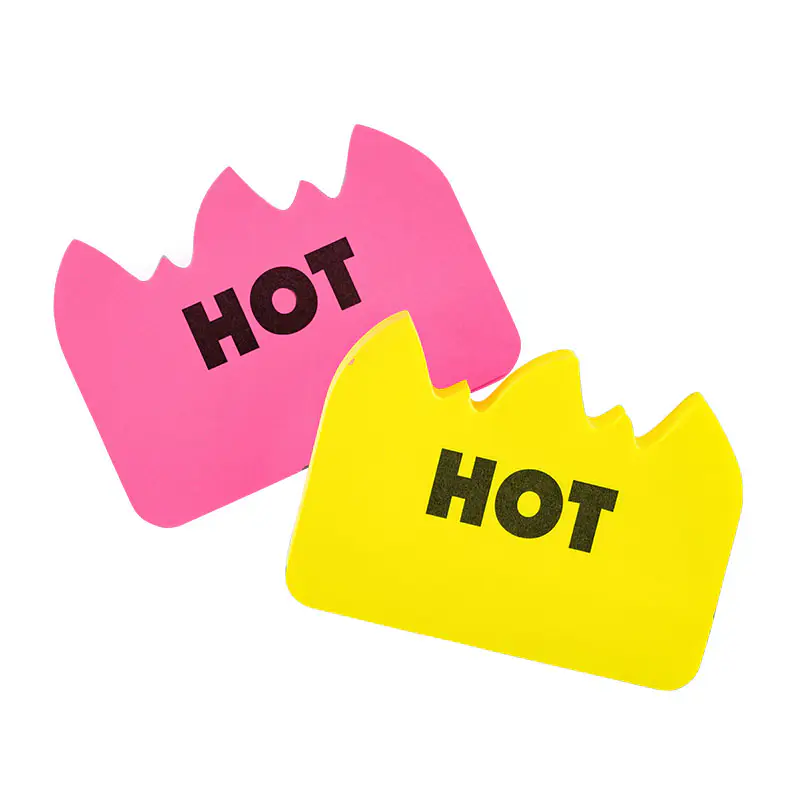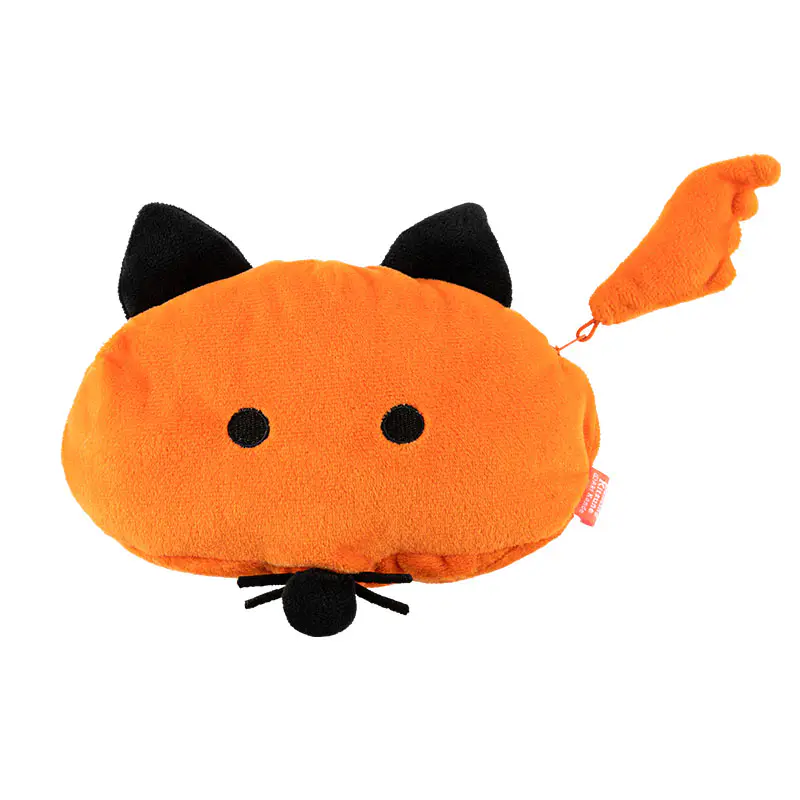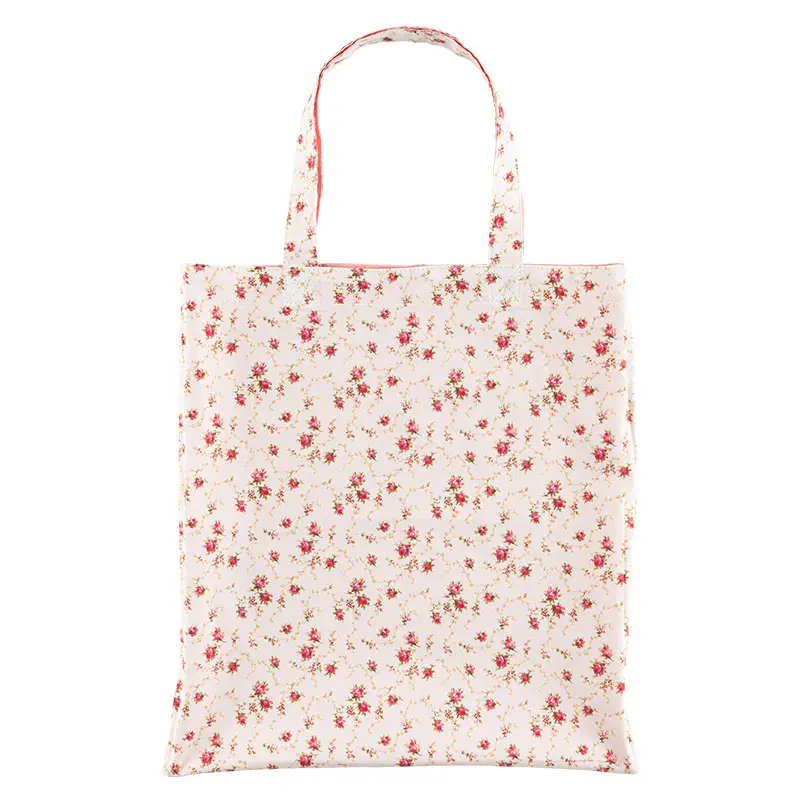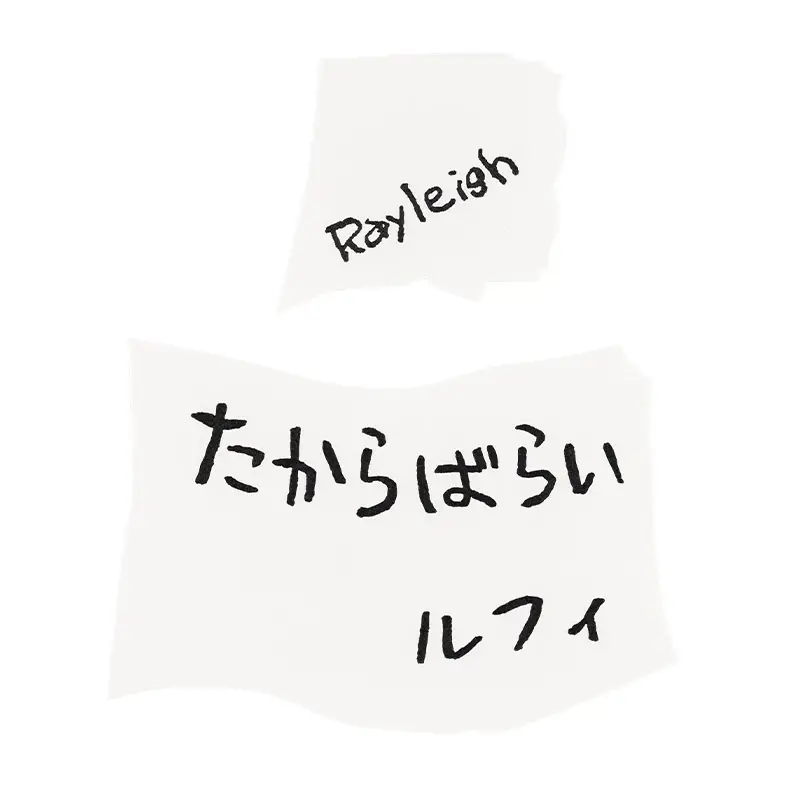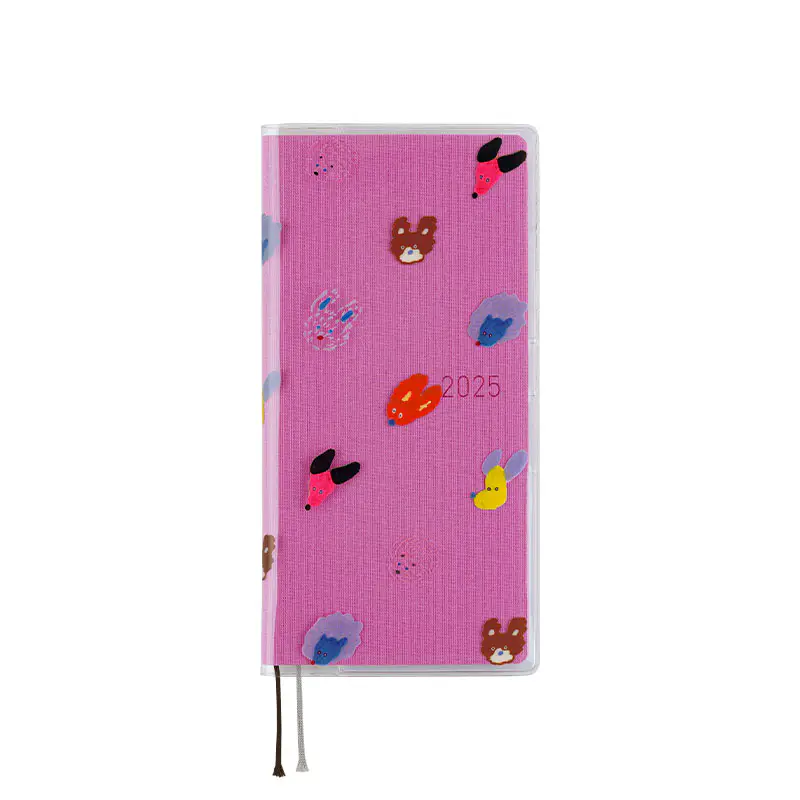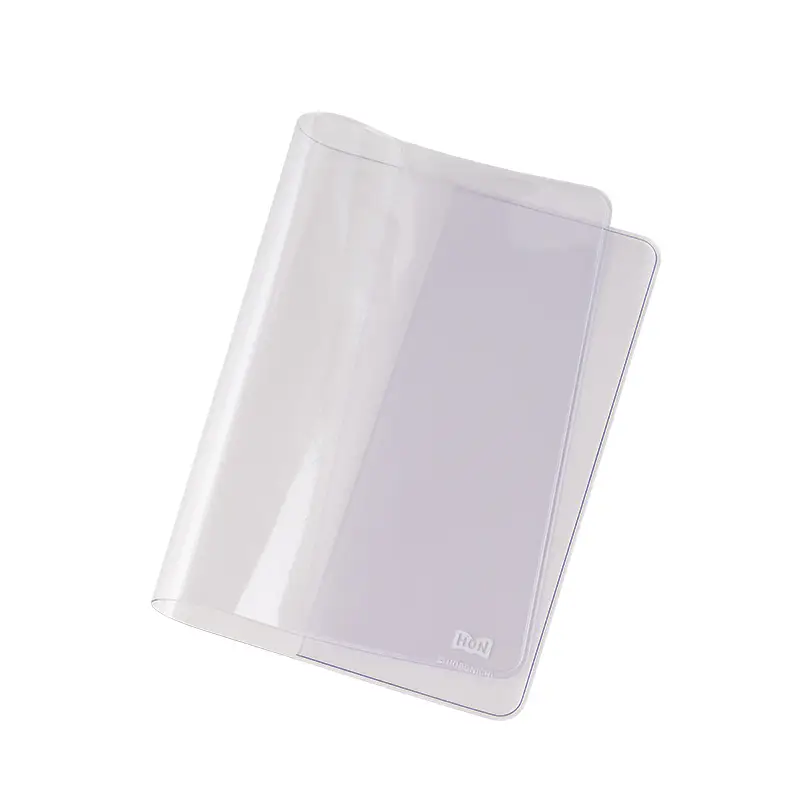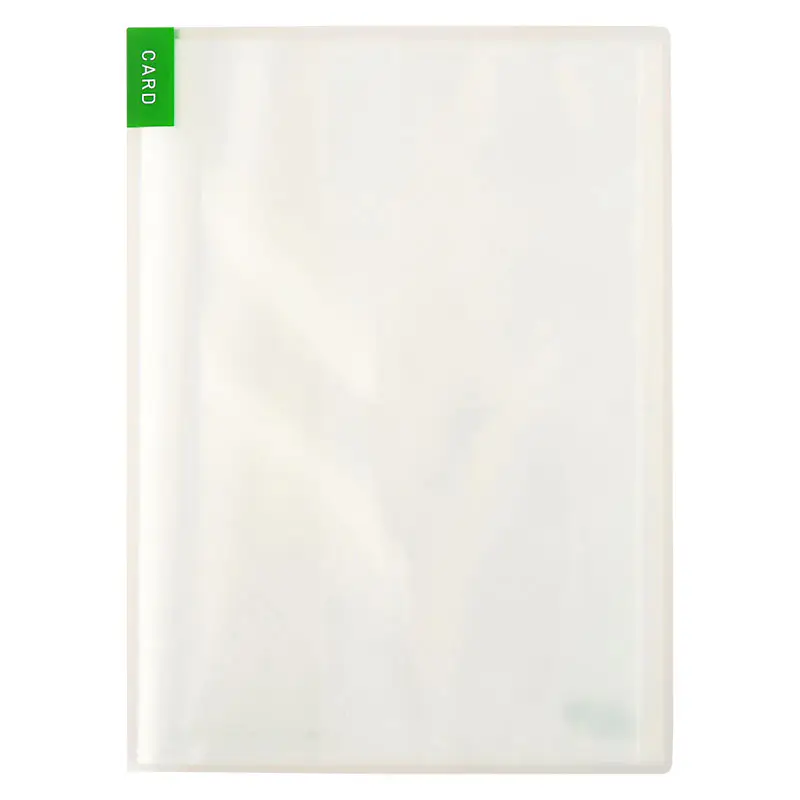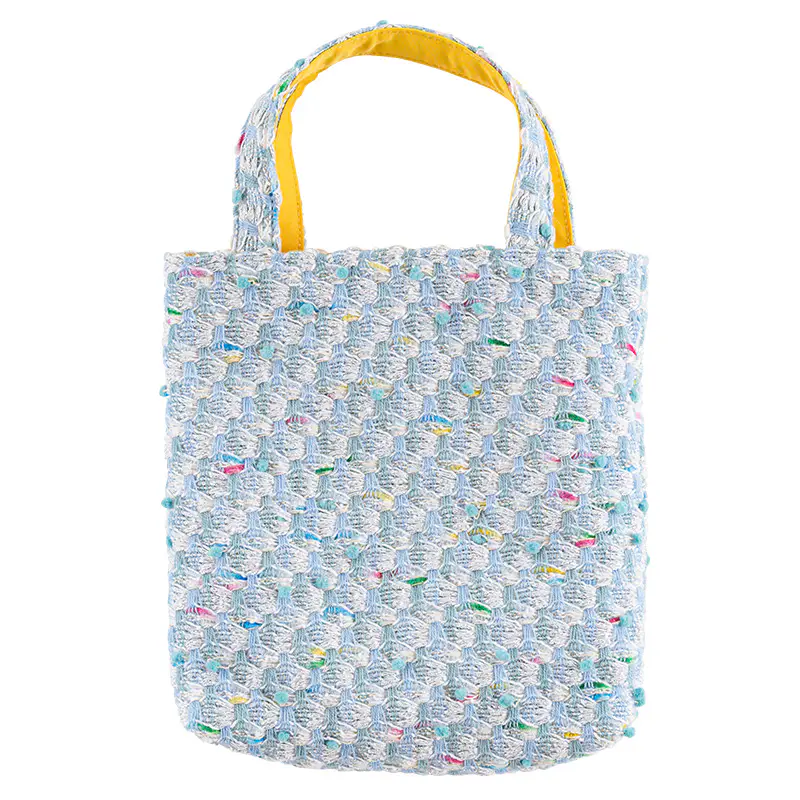Bow & TieSushiWeeks Hardcover Book / Weekly Horizontal / JPN edition / Apr start / Mon start
- 2025ver.
The Bow & Tie series is covered with the same textured, shiny fabric used in neckties. The material has a beautiful gloss and is soft to the touch.
The Sushi pattern has many sushi lined up on a bright yellow cover. The pattern of the plates, which match the sushi items, is also expressed in detail with the necktie weave. The fabric used for neckties has a weave texture that is pleasant to the touch and has an appealing silky luster.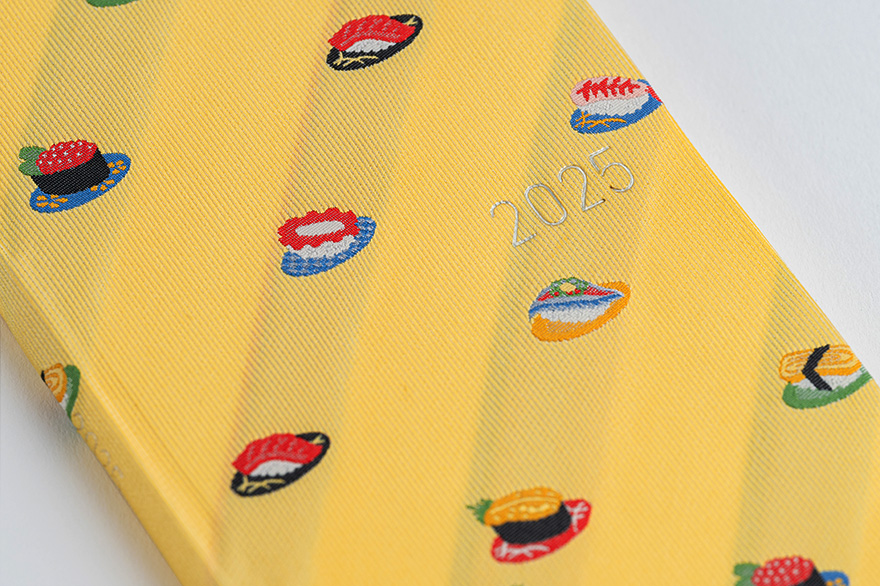
Tuna, salmon roe, shrimps, octopuses, horse mackerels, and eggs. The favorite sushi revolves one after another, creating a lively and happy pattern. The sea urchin sushi plate that appears here and there also has some “gari” pickled ginger on the side!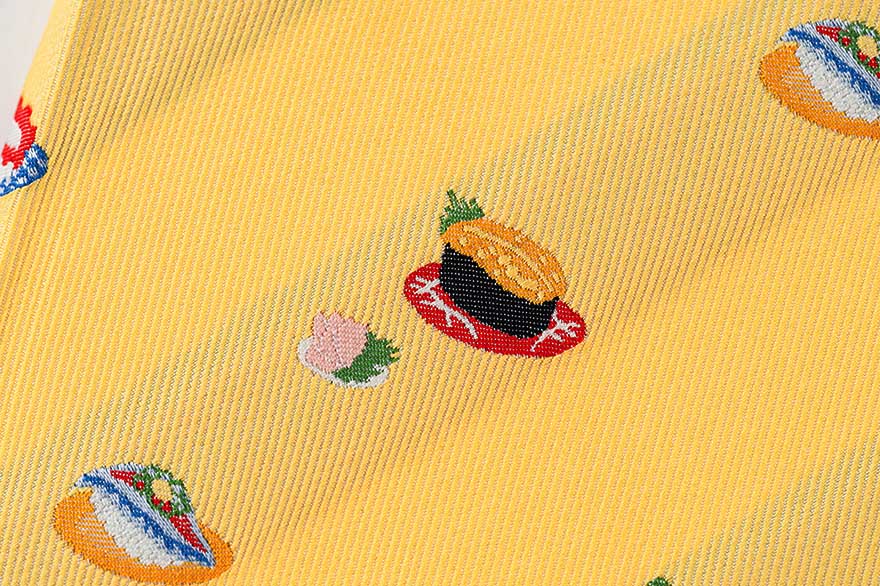
The cover has been constructed as a light, hardcover book with some give to it so it still bends.
When you order this Hobonichi Techo Weeks, you’ll receive a clear, adhesive corner pocket you can stick anywhere you like. 
The book uses thin and light yet durable Tomoe River paper. This paper that underwent an overhaul with the 2024 edition techo is more resistant to bleed through, lighter despite being the same thickness, and has a smoother surface by adjusting the fibers of the paper. 
The Weeks book has space for writing in plans or journal entries, and it also has 69 pages of grid paper memo pages in the back (73 pages in the English edition). The back of the book contains bonus pages, including Sample Symbols and Icons and Oodles of Noodles. 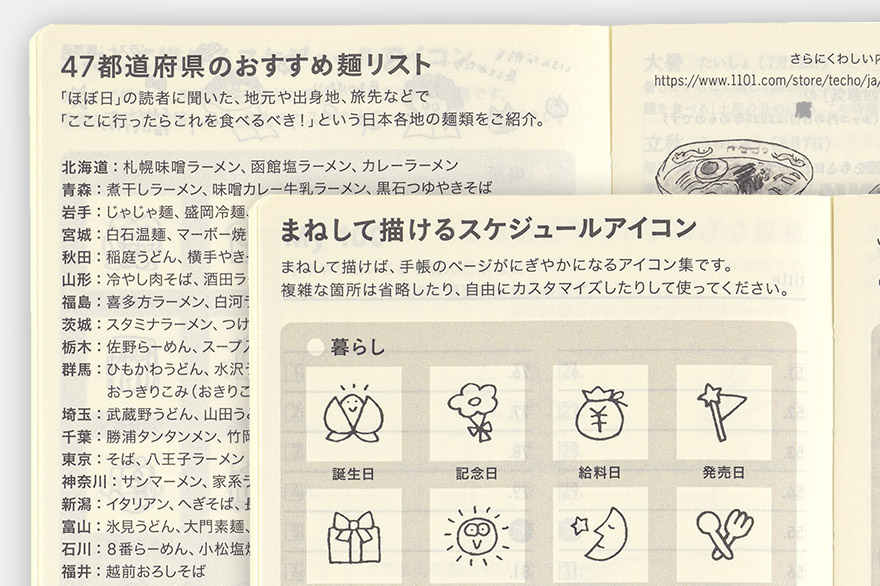
If you’d like storage space or a way to change up the look of your Weeks book, you can customize your book by pairing it with a Weeks cover.
See Weeks cover lineup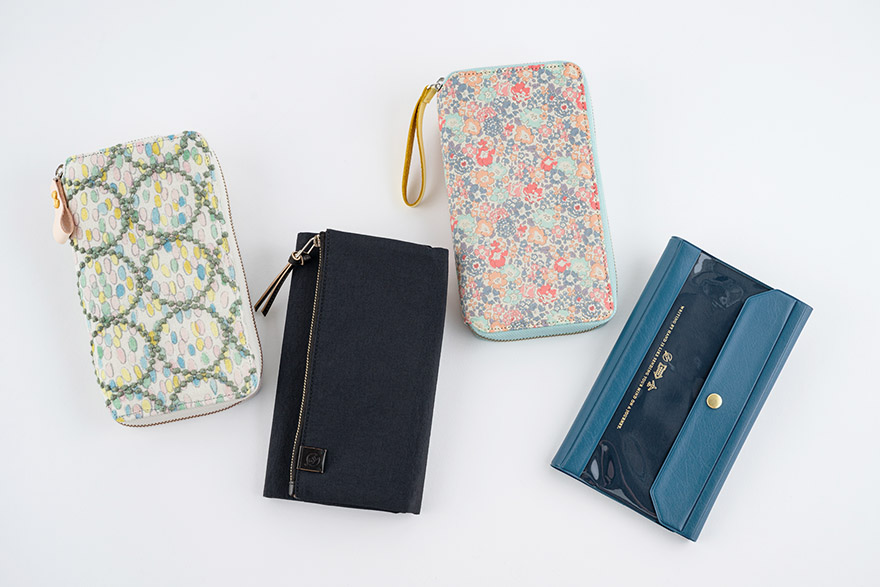
Introduction to the Bow & Tie series products
(Hobonichi Techo 2025 lineup)
Staff List
- Photographer
- Styled Images: Masahiro Tamura / Product Detail: Hiroyuki Oe
- Stylist
- Haruka Kimura
Discover more (Techo)
![]()
- ¥2,860 - ¥2,970
![]()
- ¥3,190 - ¥3,300
![]()
- ¥2,860 - ¥2,970
![]()
- ¥3,190 - ¥3,300
![]()
- ¥2,860 - ¥2,970
![]()
- ¥3,190 - ¥3,300
![]()
- ¥3,190 - ¥3,300
![]()
- ¥2,860 - ¥2,970
![]()
- ¥3,190 - ¥3,300
![]()
- ¥3,190 - ¥3,300
![]()
- ¥3,190 - ¥3,300
![]()
- ¥4,950 - ¥5,060
Discover more (Accessories)
![]()
- ¥990
![]()
- ¥242
![]()
- ¥4,400
![]()
- ¥583
![]()
- ¥2,860
![]()
- ¥3,850
![]()
- ¥720
![]()
- ¥950
![]()
- ¥720
![]()
- ¥495 - ¥660
![]()
- ¥660
![]()
- ¥13,200
Specifications*Specifications may vary slightly
Size H: 188 x W: 94 x T: 11 mm / H: 7.4" x W: 3.7" x T: 0.4" Weight Approx. 138 g Main material Polyester / Paper Compatible Techo Covers
- Weeks Book (Japanese / April Start)
Language Japanese Pages 240 pages Paper Type / Binding Thin, light Tomoe River paper resistant to bleeding and designed for planners / Stitch-binding Graph Paper Size 3.55 mm Start of Week Monday-start week Yearly Calendar 2024, 2025, 2026 Yearly Index Apr. 2025 - Mar. 2026 (2 pages) Monthly Calendar Mar. 2025 - Apr. 2026 (28 pages) Daily Quotes One per week (Japanese) Weekly Pages Feb. 24, 2025 - Apr. 5, 2026 (116 pages)
*All weekly pages include quotes.Graph Paper 73 pages Bonus Pages Shorthand Note-Taking / Using Common Items to Measure Size / My 100 / Sample Symbols and Icons / Recommended Noodle List of 47 Prefectures / Solar Terms / Emergency Preparedness / Age Table / Conversion Chart / Getting the most of Hobonichi / Contact List / Personal Notes Listed Information Week of the year / Rokuyo (traditional Japanese calendar) / Solar terms / Japanese holidays / Moon phase (weekly pages include every phase, monthly calendars only include full and new moon) Other See the Exploring Each Type page for more details
User recommendations
If you’ve used any of these products, we welcome your notes on what you like about them or what led you to buy them so we can share it with customers who are currently considering these products. We’d also love to welcome comments from customers who purchased their techo outside the Hobonichi Store or received their book as a gift.
Please Read Before You Buy
We’ve compiled a list of warnings, potential issues, and tips to keep in mind for this particular product. Additionally, the color of the product may be slightly different in actuality than compared to how it appeared on a computer or smartphone screen.
- Press marks or shines may appear on the corners
You may notice press marks, slight whitening, or a glossy finish on the corners of the front and back covers. These are unavoidable results of the binding process.
- Pattern alignment varies by product
The patterned fabric has not been aligned to a specific layout, so the placement of each design will vary by product. The product will not be an exact replica of the one in the product photographs.
- Use caution around sharp objects
The material in this product snags easily on sharp objects, so please handle with care.
- About the paper used (techo)
The Tomoe River paper designed for planners is known for its thinness and smooth writing surface. However, depending on the type and amount of ink or pen used—as well as environmental conditions—some ink may bleed through or take longer to dry. We recommend testing your pens on an inconspicuous area first, or using a pencil board or blotting paper for best results.
